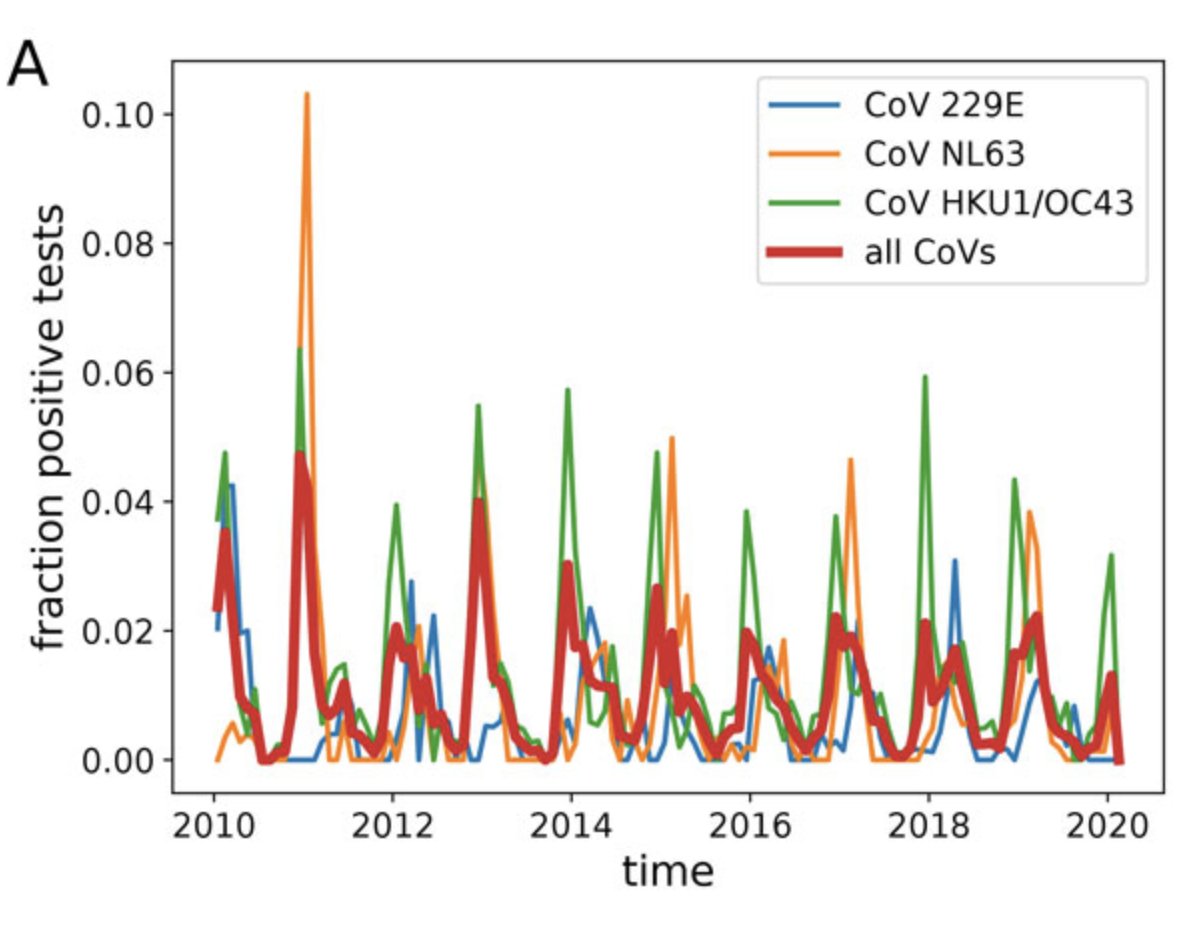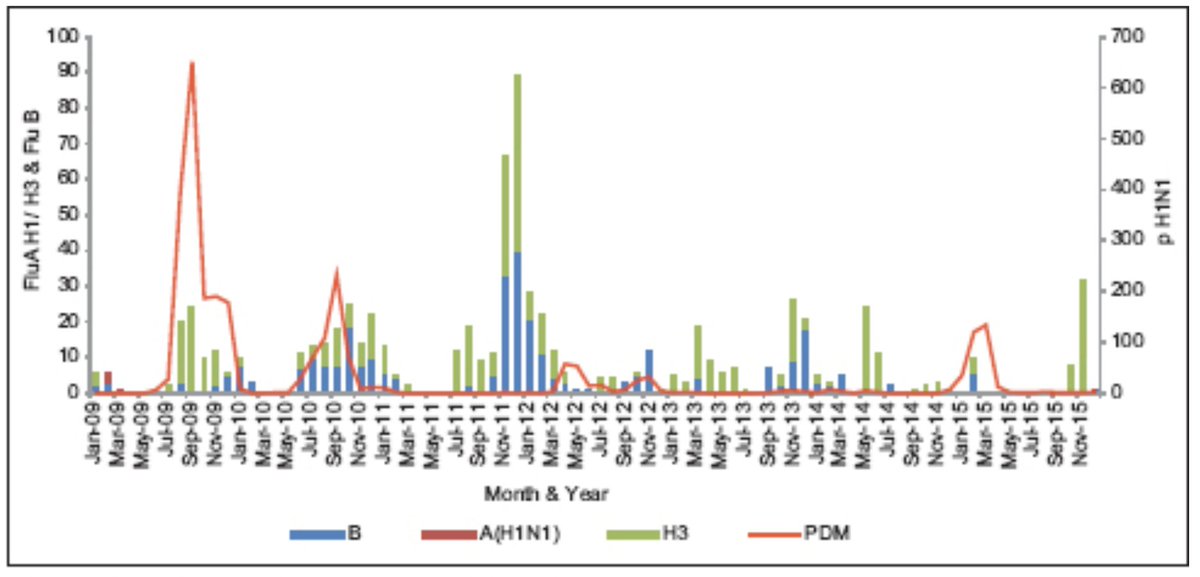Contrary to recent claims, #SARSCoV2 is expected to be seasonal, as are essentially all >200 respiratory viruses in circulation, including the four & #39;common cold& #39; coronaviruses (see below). (1/5)
Source: https://smw.ch/article/doi/smw.2020.20224">https://smw.ch/article/d...
Source: https://smw.ch/article/doi/smw.2020.20224">https://smw.ch/article/d...
#SARSCoV2 is primarily transmitted through droplets in the air and these survive for longest in in cold, dry air, and possibly in the presence of low UV (sunlight). Though the virus can transmit in any climatic condition and through other means, but just less well. (2/5)
The fact that a virus is seasonal does not mean that it cannot spread at any time of year when conditions are otherwise suitable. In the presence of a large reservoir of susceptible conditions, #SARSCoV2 can cause epidemics irrespective of climatic conditions. (3/5)
The reproductive number of an epidemic (Rt) can be >1 irrespective of the season in the early on in an epidemic. Once a proportion of the host population has been immunised, (decreasing Rt), epidemic seasonality kicks in: in winter (and spring) Rt>1, and in summer Rt<1. (4/5)
This regular alternation of Rt values above and below Rt=1 over the year is what causes the typical seasonal patterns we see for common colds and seasonal flu (e.g. pic below), and are observed in both hemispheres. (5/5)
Source: http://www.ijmm.org/article.asp?issn=0255-0857;year=2019;volume=37;issue=3;spage=401;epage=405;aulast=Kiruba">https://www.ijmm.org/article.a...
Source: http://www.ijmm.org/article.asp?issn=0255-0857;year=2019;volume=37;issue=3;spage=401;epage=405;aulast=Kiruba">https://www.ijmm.org/article.a...

 Read on Twitter
Read on Twitter



